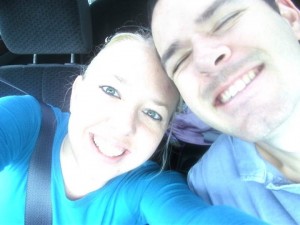What is the Catholic Church? Who is a Catholic? These are important questions, ones that I must understand as fully as possible if I am to successfully practice their faith this month.
The first time we hear the term “catholic” (notice the lower case) used was in A.D. 110 by St. Ignatius, the bishop of Antioch. On his way to the Roman arena to be martyred by wild animals, St. Ignatius wrote in his Letter to the Smyrnaeans,
“Where the bishop is present, there let the congregation gather, just as where Jesus Christ is, there is the catholic church.“
In this way, St. Ignatius used the word “catholic” in reference to the church’s universal nature, because the church was one under Christ who is present in and lord of all.

That’s great, but I think we need to get a little more specific, after all, many Hindus share a similar notion regarding the pervasive reality of Brahman.
In a way, it’s helpful to view the term “catholic” as not a mere title, but a descriptor that eventually took on the form of a proper noun. Indeed, the word catholic does not appear in the Bible, however Jesus himself described his institution as the “church” (Matthew 16: 15) and in the Book of Acts 11:26 we see in Antioch the followers of Christ being called Christians. Catholic then describes the nature of both the Church itself and the one who instituted its formation. As Bert Ghezzi says in Being Catholic Today,
“As the Church is catholic because Christ lives in it and unites it, we are Catholics because of our relationship to him. Jesus made us members of the Church by linking us to himself…“
He goes on to describe Jesus’ parable of himself as the vine and his Church as the branches (John 15:5). Without the source of life, the vine, the branches wither. So in summary, a Catholic is “universal” because the vine (Jesus) is universal. By taking on the spirit of Christ, by adopting his spirit, we assume his nature in our lives. Our view changes so that we are better equipped to perform the catholic mission of Christ’s “Great Commission” to preach the good news to all the earth (Matthew 28: 19-20).
So that’s what makes the Church catholic, but what about the visible forms, the structure, the people?
First of all, the proper noun form of the term, Catholic Church, was not instituted until several groups broke off from the main Church. At that time, “catholic” ceased as a mere descriptor of Christ’s one Church, and became the name of that particular form of Christianity.
The Catholic Church today is the largest Christian entity on the planet. 1.5 billion people claim Catholicism in all its various shapes and forms. The Catholic Church claims lineage from the first apostles of Christ, the very leadership Jesus himself set up to maintain his Church. At the head of this earthly organization was St. Peter, the “rock” of Christ’s Church (Matthew 16:18). The Pope is considered the heir and the continuation of this leadership role assigned to St. Peter.
“This is the one Church of Christ which in the Creed in professed as one, holy, catholic and apostolic; which our Savior (Jesus), after His Resurrection, commissioned Peter to shepherd, and him and the other Apostles to extend and direct with authority; and which he erected for all ages as ‘the pillar and bulwark of the truth’ (1 Timothy 3: 15). —Vatican Council II, Dogmatic Constitution on the Church

From the pope to the cardinals, bishops, and priests who lead, nourish, and govern the Church, to the laity who attend the Mass (holy celebration which includes the Eucharist)…this is the Catholic Church initiated by Christ about 2,000 years ago which has grown and evolved into the structure we see today. St. Robert Bellarmine provided this classic definition of a Catholic,
“The community of men and women linked together by the profession of the same Christian faith, united in the communion of the same sacraments, under the government of the legitimate pastors and especially the one vicar of Christ on earth, the Roman pontiff (the pope).”
Along with this filial and governmental structure, Catholics hold this creed–the Apostle’s Creed–as the central confession of faith.
The Apostle’s Creed
I believe in God, the Father almighty,
Creator of heaven and earth,
and in Jesus Christ, his only Son,
our Lord,
who was conceived
by the Holy Spirit,
born of the Virgin Mary,
suffered under Pontius Pilate,
was crucified, died and was buried;
he descended into hell;
on the third day he rose again
from the dead; he ascended into heaven,
and is seated at the right hand
of God the Father almighty;
from there he will come to judge
the living and the dead.
I believe in the Holy Spirit,
the holy catholic Church,
the communion of saints,
the forgiveness of sins,
the resurrection of the body,
and life everlasting. Amen
There is much more to the Catholic Church regarding rituals, customs, sacraments…all of which we will explore more deeply this month. It should also be noted that there are many traditions that exist within the Catholic Church that reflect the cultural nuances of this global faith, and yet do not threaten the integrity of the Faith as a whole. I hope this overview provides a good starting point to our gradual understanding of this faith.
What are your thoughts on these opening remarks? If you are Catholic, please feel free to add to this description.

